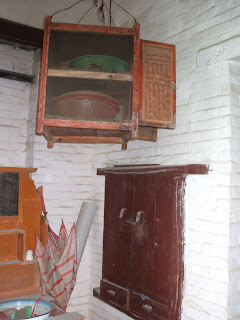
Taishan is a very laid-back. Living standards have improved. Some factories have been built and people from the villages can work in the factories to earn more money. Work in the rice field, while still hard, is also much improved. Machines are used instead of water buffalos and humans. Instead of doing all the work themselves, many people hire migrant workers from Guangxi and Hunan to work the fields.
Our driver told us that of all people living in Taishan, half are the locals and the half are retirees returning from overseas. He also told us that people in Taishan are laid-back. The retirement age in China is currently 50 years old. People who are in the late 40s are already getting ready for retirement by working very short days (like leaving work at 11:30 AM). What do they do with their time? Play mahjong, of course.














































